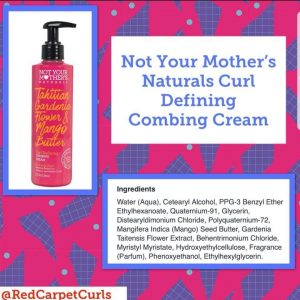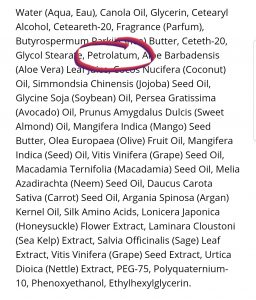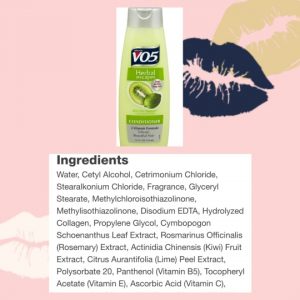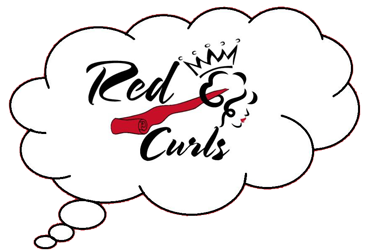My Beautiful #RedCarpetCurlsRoyalty,
Shopping for hair products can be an overwhelming experience. Learning to properly read product labels can save you so much time and money in the long run of your Curly Girl Method Journey. If you are shopping with kids, it’s nearly impossible to really focus and spot the bad ingredients we need to avoid. So, let’s make this a bit easier shall we?
What Should I Be Looking For On My Product Labels?
When following the Curly Girl Method you are to avoid
- Sulfates
- Silicones
- Parabens
This is the Original Curly Girl Method, also known as “Strict” CGM, as explained in our ‘What, is the Curly Girl Method’ article.
When following a “Modified” Curly Girl Method Routine, you will also be avoiding:
- Drying Alcohols
- Synthetic Waxes
- Petroleum/Mineral Oil
Be sure to check out our ‘Curly Girl Method: Which Ingredients to Avoid and Why’ article for a full breakdown on why these ingredients can be potentially harmful to your hair. You will also find example ingredients to spot on labels.
Tips for Reading Product Labels:
Let’s start with an example label of a popular CGM approved product to help you visualize what to do.

This is the Not Your Mother’s Natural Curl Defining Combing Cream. This is a 100% CGM approved product to use as a leave-in conditioner/styler. Now the way to determine this is to spot bad ingredients first.
- Look for Sulfates: Many sulfates will make themselves known by containing the word “Sulfate” as part of the name. Examples include Sodium Lauryl Sulfate or Ammonium Lauryl Sulfate. But not every sulfate will follow this pattern. That is why I suggest reading the article hyperlinked above since it contains a list you can reference while shopping. Don’t be confused by Magnesium Sulfate, while it has the word sulfate, it is NOT a sulfate, it is another name for Epsom Salt which is fine.
- Look for Silicones: Like sulfates, silicones will stand out on product labels. Many silicones can be identified by the ending of the word. Many silicones can be identified by ending in “cone,” “conol,” “col,” or “xane.” Some Examples of popular silicones on labels are; Dimethicone, Amodimethicone, Cyclomethicone/Cyclopentasiloxane, Trimethylsilylamodimethicone. These are examples of water-insoluble silicones. These must be removed with a clarifying shampoo. Water-Soluble Silicones are gentler silicones used to preserve moisture in your hair. It can be identified by the beginning of the ingredient, they will start with, “PEG -8” or higher. This means the silicone will rinse out with a simple water rinse, no cleanser needed. While I do not promote the use of any kind of silicone, including water-soluble silicones, it is my job to give you all the information you deserve to know so you can make the right decisions for your own hair care routine. Examples of water-soluble silicones include PEG-8 (or higher) Dimethicone, Bis-PEG-8 (or higher) Dimethicone, Bis-PEG-8/PEG-8 Dimethicone, Bis-PEG-18 methyl ether dimethyl silane, PEG-8-PG-coco glucoside dimethicone.
- Look for Parabens: Parabens are used as preservatives to extend the shelf-life of products, increasing the odds that it will be sold. Similar to the other two ingredients discussed, with some practice, parabens will be pretty obvious to spot as many of the names end with the word “paraben.” Examples include methylparaben, propylparaben, isopropyl paraben, isobutyl paraben, butylparaben, and sodium butylparaben.
These are the three types of ingredients to avoid when following the Original Curly Girl Method, also known as “Strict” CGM.
If you are following a “Modified” Curly Girl Method Routine you will be adding three more types of ingredients to the list, once you look for the sulfates, silicones, and parabens.
4. Look for Drying Alcohols: Alcohols can be a bit more tricky to spot since there are “Good” Alcohols also known as Moisturizing Or Fatty Alcohols. Examples of those will be Lauryl alcohol, Cetyl alcohol, Myristyl alcohol, Stearyl alcohol, Cetearyl alcohol, and Behenyl alcohol. These obviously help moisturize the hair and keep it healthy. What you want to look for is the “Bad” Alcohols such as ethanol, SD alcohol, SD alcohol 40, Alcohol denat, Propanol, Propyl alcohol, and Isopropyl alcohol. According to NaturallyCurly.com, These bad/drying alcohols evaporate quickly due to their low molecular weight, and for this reason, are often used as an additive to help decrease the time it takes for the hair to dry. However, this can create dry, frizzy hair as it may cause the cuticle to be roughened and/or oil and water to be removed from the hair along with the alcohol (remember, these are often used as astringents for our skin for just this reason).
5. Look for Synthetic Waxes: Similar to silicones, synthetic waxes are inorganic (not produced from natural plants) these are manufactured to coat the hair strands in an impenetrable waxy film that over time builds up and keeps moisture from getting to the hair strands. They also work as thickeners for the products they are added to. These waxes must be clarified from the hair using a sulfate-free clarifying shampoo. This does not include emulsified waxes, emulsified waxes are natural waxes that have been broken down enough that they are water-soluble. A popular example is the DevaCurl Deep Sea Repair, it contains Emulsified Sunflower wax which is a naturally occurring wax that is broken down and removed from your hair with water. You will not need a clarifying shampoo for that. Synthetic waxes are what need to be clarified from hair, examples include Paraffin and Microcrystalline Wax, which are derived from petroleum. Other examples include carnauba wax and beeswax.
6. Look for Petroleum/Mineral Oil: Petroleum and mineral oil work like silicones and waxes. The main benefit is that it is an excellent sealant. The problem is it is not an organic ingredient. It coats the hair strands in an impenetrable film that will keep the moisture in your hair for longer periods of time. The problem is that once the moisture runs out it encases dry hair making it impossible to moisturize. You will need a sulfate-free clarifying shampoo to remove these ingredients. Examples include mineral oil, paraffin wax, and petrolatum.
Final Tips From Red Carpet Curls on Reading Labels:
- With practice spotting, the different bad ingredients will become easier. Remember just because a few products from a particular line are Curly Girl Method approved does not mean the entire line is automatically safe to use. Devacurl is considered the ultimate choice for CGM yet three of their products include other potentially damaging ingredients like beeswax in the Set it Free Spray and Drying Alcohol in the Hairspray. Cantu is another example of having many CG approved products but not ALL products from the line are safe. Let’s take a look at the ingredient label for one of the Cantu Products to show what I mean.
The Cantu products are a very popular brand of products when people start the Curly Girl Method. That is because they can be found in your local drug stores, beauty stores, and big department stores like Walmart and Target. While most of their products are safe here is an example of one that is not.
Cantu Coconut Curling Cream

As you can see on the label, there are ALOT of ingredients in this label and it can be overwhelming. That is why you have to take your time and look carefully through the ingredients on each line. That is often how a silicone or even petroleum is missed.
- Another tip when reading labels is to remember the first five ingredients on any label is what roughly 80% of the product is made of. So the first few ingredients will be what impacts your hair the most. So if you see a silicone, drying alcohol or any of the other bad ingredients on a label put it back, but furthermore if the bad ingredient is in the first five ingredients the greater the probability that this ingredient will negatively influence the hair. For example, if drying alcohol is the third ingredient, I know it can dry my hair out causing breakage and split ends.
- Since the first five ingredients make the most impact on your hair you want to make sure water is either the first or second ingredient as water is the BEST moisturizer for your hair beside your own natural sebum.
- If a product advertises a specific scent more than likely it will be one of the last ingredients meaning it makes up less than 1% of the actual product. You will find this with cheaper products such as Vo5 Conditioners and Suave Naturals Conditioners. Let’s look at an example.
Herbal Escapes Kiwi Lime Squeeze Conditioner By Alberto Vo5

While the product advertises a Kiwi Lime scent, you would figure it would be higher up on the list giving a bigger impact to the hair. In actuality, the first five ingredients contain water, fatty alcohols, undisclosed alcohol (which most of the times companies that do not disclose what kind of fragrance often end up getting complaints of allergies. Always know EVERY ingredient being put into your product especially if you have sensitive skin and scalp), and the Itchy M’s. The kiwi and lime scents are at the bottom of the list meaning it will make up less than one percent of the product.
- Stick with small “Mom-and-Pop” companies as they send to have more natural ingredients because they make the products in smaller batches as compared to big companies like DevaCurl, Cantu, Alberto Vo5, etc.
The final tip I can give you all is to take your time and practice when you are online shopping or shopping in stores. The more comfortable you are with these ingredients and reading labels the easier they will be.
If You Are Still Experiencing Problems Reading Labels Correctly…
Listen, reading product labels are tough! We all need help, in the beginning, that is why we are all here!
If you are still missing bad ingredients on your product labels, try using a CGM app! You read that right! There are apps out there to tell you if a product is approved or not. I know you must be sitting here like why didn’t you just start with that?! The reason is, that while these apps are helpful they are not always 100% correct. Remeber apps are to be updated by everyday people who do make mistakes every now and then. It’s best to learn the rules and patterns so you can always tell yourself if something is okay to use. That way you are more in control of the situation. But in any event, the apps are always helpful!
Curl Scan – A database of Curly Girl approved products.
As I said before not every app will be 100% correct but this database can be a great start to finding products. You simply scan the barcode to the product you have in hand and if it is registered as a safe ingredient it will pop up on the database. Unfortunately, it only scans the barcode and doesn’t analyze ingredients so some mistakes can be made. Use it at your own risk.
- Click here for Curl Scan Database
Curls Bot – Ingredient Analyzer
CurlsBot aims to make it all easier by analyzing ingredient lists to see if they comply with the “curly girl” rules pioneered by Lorraine Massey. This was inspired by the creator’s prior job as a developer as well as the isitcg app. It differs a little in its functionality – it can’t tell you about things like protein or humectants yet, but it has a more advanced function for identifying non-“curly girl” ingredients.
- Click here for CurlsBot website
We have also created albums of Approved products in them by category to give you more ideas.
Red Carpet Curls Albums
These albums are not super extensive but are constantly being updated. They include a format exlusive to Red Carpet Curls which is: The name of the product, the ingredients label, a photo of the product, and our RCC logo. Every product in this album is CG safe.
Curly Girl Method Support Group International Albums
These albums are much more extensive but do not follow the format of the RCC albums. I am also one of 2 admins of this group. It is our sister group so you can always find my help here as well. These albums contain screenshots of products by category. The products are added and checked consistently by admin and moderators. Members are not allowed to post in the albums.

